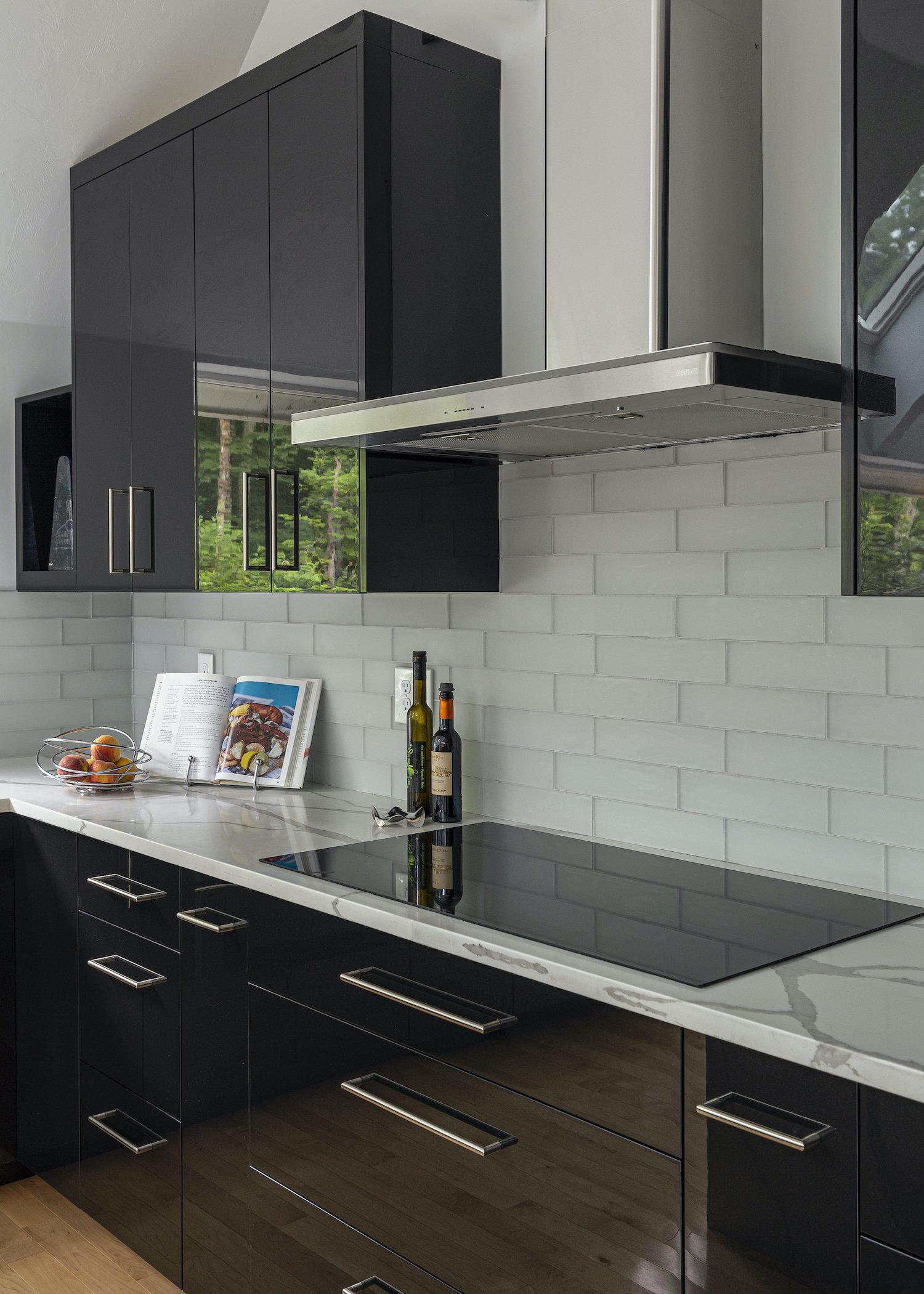The Induction vs. Gas Debate
Anyone in the market for a new range or cooktop probably has heard the ongoing debate over induction-powered ranges and cooktops versus gas. The latest research suggests that without proper ventilation, gas ranges are unhealthy in residential settings. Some members of Congress have even suggested banning their use, but nothing that extreme is likely to happen. Even without the controversy surrounding gas ranges and cooktops, induction appliances have gained popularity and market share. The technology has improved since they were first introduced, and the pricing is no longer prohibitive – there are models at several price points.
We’ve been using induction products for years and in kitchens of all styles. Below is an induction cooktop in a more traditional setting while below that is an induction cooktop in a modern kitchen with black lacquer cabinets.
Induction 101
For those unfamiliar with induction, here’s the basic premise: induction cooking uses electromagnetic energy to heat pots and pans and cook the food within. Although the surface resembles a smooth electric cooktop, there are no coils beneath.
What’s required? First of all, you have to use either steel or iron cookware – not aluminum or ceramic. Simply put - if a magnet sticks to it, you can use it. Secondly, you have to have an electric outlet that can handle the load –a 220-volt outlet with a 40-50 amp breaker is recommended by most manufacturers. If you’re replacing an electric stove, you probably have the necessary wiring. However, if you’re converting from a gas stove, you’ll need to check that because gas stoves typically only use a 120-volt circuit. Also, you’ll need to make sure to cap your gas line.
Speaking of converting from gas, Massachusetts is offering a $500 rebate when changing from gas to induction through MassSaves.
Benefits of Induction
First and foremost, induction cooking is fast – faster than electric or gas. In the past, chefs preferred gas, but induction is even gaining popularity in restaurants and professional kitchens. There’s also a safety factor – since the pan heats and not the surface, accidental burns are less likely. There’s no open flame. And finally, no toxic gasses to deal with. However, just as with all electric appliances, there is a low level of radiation that is emitted. Compared with other fuel-powered ranges and cooktops, induction comes out as the cleaner, safer option. The one drawback that we’ve heard of is that induction cooktops are noisy – there’s a buzzing or humming, but we’ve been told that it helps if your pot or pan completely covers the surface of the element.
You also won’t get burnt food on your cooktop surface. And cleaning the surface is easy. And as you become accustomed to cooking with induction, you’ll learn that you have great control because of the consistency of the temperature.
You can spend anywhere from $900 to $5000 on a cooktop and from $2500 to $20,000 on an induction (duel fuel) range depending on the manufacturer and model. Cooktops range in size from 12-inch for a two-burner cooktop all the way up to a 45-inch induction cooktop by Miele.
Ranges come in 24-inch, 30-inch, 36-inch, and all the way up to a 48” induction top La Cornue range (approximately $15,959). We also love that induction ranges come in fun colors like this yellow 36” freestanding range from Bertazzoni.
Remember when microwaves were first introduced? They were big, clunky appliances and no one really knew how to use them. But as technology improved, everyone learned how to use one and now microwaves are ubiquitous in kitchens. As time goes on, we predict there will be more and more induction cooktops and ranges in use.



